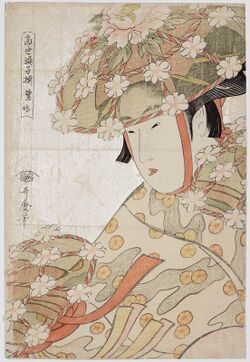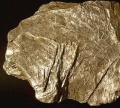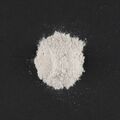Difference between revisions of "Category:Mica: Ukiyo-e colorant"
| (21 intermediate revisions by the same user not shown) | |||
| Line 1: | Line 1: | ||
| − | [[File: | + | [[File:SC228226.jpg|right|250px|link=Utamaro I, The Heron Maiden from series An Array of Dancing Girls of the Present Day, 11.14364|The Heron Maiden by Kitagawa Utamaro I]] |
| − | <font size="3">'''[[Mica]]'''</font> 雲母(''kira'' or ''unmo''): A group of silicate minerals that cleave into thin, flexible sheets. It is ground into a powder for use | + | <font size="3">'''[[Mica]]'''</font> 雲母 (''kira'' or ''unmo''): A group of silicate minerals that cleave into thin, flexible sheets. It is ground into a powder for use on ''ukiyo-e'' prints. Powdered mica can be printed or sprinkled to create a shimmering effect. Paste or animal glue (膠 ''nikawa'') would be used to affix the mica. Mica can appear in a variety of tones depending on its origin, preparation or if it is applied over a printed color. On its own it is a pearlescent white but mica can also be mixed with a colorant to make colored mica. Pink, mica and a red colorant or dark gray, mica and carbon black are the commonly found colored micas. |
| − | '''For | + | Large fields of mica appears most frequently on prints made during the late 18th century that depicted actors and beautiful women where it was used on the background to highlight the figure. |
| + | |||
| + | '''For additional information see:''' [[Mica]] | ||
| + | <br> | ||
<br> | <br> | ||
| − | == Examples of | + | == Examples of Mica in Ukiyo-e Prints == |
{|class="wikitable" style="display: inline-table;font-size:90%;text-align:center;width:15%" | {|class="wikitable" style="display: inline-table;font-size:90%;text-align:center;width:15%" | ||
| Line 41: | Line 44: | ||
== Analysis == | == Analysis == | ||
| − | X-ray fluorescence analysis (XRF) is used to detect | + | X-ray fluorescence analysis (XRF) is used to detect |
<gallery mode="packed" heights="200px" style="text-align:left;"> | <gallery mode="packed" heights="200px" style="text-align:left;"> | ||
| − | + | Slide26 F607.PNG|<center>XRF spectrum for Mica</center> | |
</gallery> | </gallery> | ||
| − | == | + | ==Images of Mica== |
<gallery> | <gallery> | ||
File:Muskovit-Pilsak.jpg|Mica (muscovite) | File:Muskovit-Pilsak.jpg|Mica (muscovite) | ||
| − | File:Kiramica C100x.jpg| | + | File:Kiramica C100x.jpg|Mica powder at 100x |
| + | File:Mica powder.jpg|Mica powder | ||
| + | File:Printed mica-cropped.jpg|Printed mica | ||
</gallery> | </gallery> | ||
==List of Prints == | ==List of Prints == | ||
| − | + | Below is a list of prints where mica was detected. | |
Latest revision as of 03:06, 15 April 2024
Mica 雲母 (kira or unmo): A group of silicate minerals that cleave into thin, flexible sheets. It is ground into a powder for use on ukiyo-e prints. Powdered mica can be printed or sprinkled to create a shimmering effect. Paste or animal glue (膠 nikawa) would be used to affix the mica. Mica can appear in a variety of tones depending on its origin, preparation or if it is applied over a printed color. On its own it is a pearlescent white but mica can also be mixed with a colorant to make colored mica. Pink, mica and a red colorant or dark gray, mica and carbon black are the commonly found colored micas.
Large fields of mica appears most frequently on prints made during the late 18th century that depicted actors and beautiful women where it was used on the background to highlight the figure.
For additional information see: Mica
Examples of Mica in Ukiyo-e Prints

|

|

|

|

|
Analysis
X-ray fluorescence analysis (XRF) is used to detect
Images of Mica
List of Prints
Below is a list of prints where mica was detected.
Pages in category "Mica: Ukiyo-e colorant"
The following 3 pages are in this category, out of 3 total.






